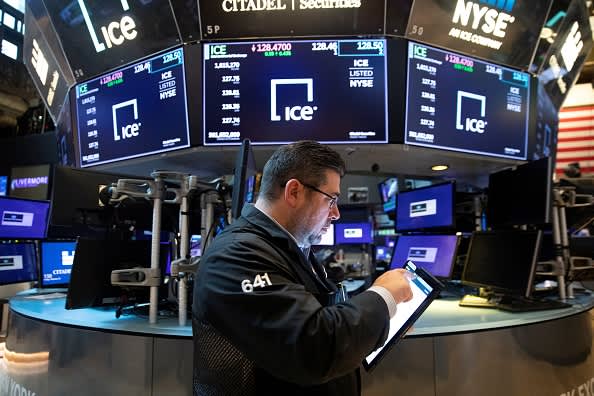Everyday investors may unknowingly have exposure to Russian stocks — but the good news is, those holdings likely represent a small part of their overall portfolios.
Investments linked to Russia have taken a nosedive in the days after the country’s Feb. 24 invasion of Ukraine, which has prompted the West to impose rounds of financial sanctions and other measures to cripple Russia’s economy.
Americans’ portfolios may touch Russia (and other countries) in many ways, perhaps via a mutual fund or exchange-traded fund.
More from Personal Finance:
When to get back into stocks after panic selling
How to protect against a cyberattack as Russia-Ukraine crisis escalates
How to move on after an eviction
Some Russia-focused funds had steep selloffs on Monday. For example, the Van Eck Russia ETF (RSX) was down 30% as of 2:20 p.m. ET — on pace for its worst day since inception in 2007. The iShares MSCI Russia ETF (ERUS) was down 28%.
But many popular funds allocate to Russia as a sliver of a broader strategy, according to financial experts. These are largely emerging markets funds that invest in stocks and bonds of developing economies like China, India, Brazil and, of course, Russia.
For example, the Vanguard FTSE Emerging Markets Index Fund ETF (VWO) had a roughly 3% stake in Russia at the end of January, according to Todd Rosenbluth, director of mutual fund and ETF research at CFRA Research, citing most recently available data. The Vanguard ETF and its mutual-fund counterpart hold a collective $112 billion.
Similarly, the iShares Core MSCI Emerging Markets ETF (IEMG) has a 2% stake in Russia and the Fidelity Emerging Markets Fund (FEMKX) has a 3% allocation, according to Rosenbluth. The funds hold roughly $74 billion and $4.5 billion, respectively, he said.
“Is having 2% or 3% of your assets exposed to [Russia] concerning?” Rosenbluth said. “My answer would probably be no.
“If you own an [emerging markets] fund you should be prepared for risk, and this is an example of some of the risk that happens.”
The Vanguard and iShares funds are passively managed funds that track a stock index; they must hold a stake in Russian stocks, which are part of the index. Actively managed funds like Fidelity’s don’t have the same requirement. (Investors generally pay more for active management, though.)
American Depositary Receipts explained
Mutual funds and ETFs likely invest in non-U.S. stocks via American Depositary Receipts. ADRs are a proxy for stocks that trade on a U.S. exchange. They give investors (including individuals) a workaround to buying shares in companies like Nokia, Royal Dutch Petroleum and Unilever on a foreign exchange — which may come with complicated rules and taxes.
The New York Stock Exchange and Nasdaq halted trading in American depositary shares in several Russia-related stocks on Monday, following new sanctions from the White House.
Investors (including mutual funds and ETFs) will be restricted from trading those stocks while the halt persists. Once trading resumes, there will likely be a “catchup” period for the fund’s investment returns (to the upside or downside) since current returns don’t reflect up-to-date pricing for the frozen stocks, Rosenbluth said.
That many diversified funds and portfolios hold just a small share of their assets in Russian entities and debt makes sense given the country’s size in the global economy, according to Charlie Fitzgerald III, a certified financial planner and founding member of Moisand Fitzgerald Tamayo in Orlando, Florida.
You have to tolerate unsettling moments like these when reaching for higher returns.Charlie Fitzgerald IIIfounding member of Moisand Fitzgerald Tamayo
Russia’s $1.65 trillion economy was less than 2% of the $94 trillion world economy in 2021.
A diversified portfolio may hold 25% of its stocks in non-U.S. companies; of that, perhaps 10% is in emerging-market stock, of which Russian investments are a portion.
Fitzgerald cautioned against selling any Russia-focused investments in the “heat of the moment” or from a feeling of panic. Emerging-market investments have a place in a portfolio — and the Russian invasion highlights the relationship between risk and return, Fitzgerald said.
“You have this undeniable relationship between risk and reward, but you have to tolerate unsettling moments like these when reaching for higher returns,” he said.
